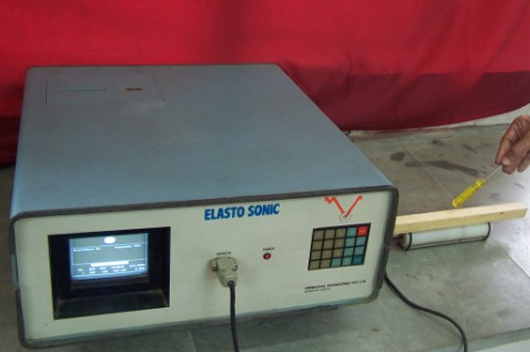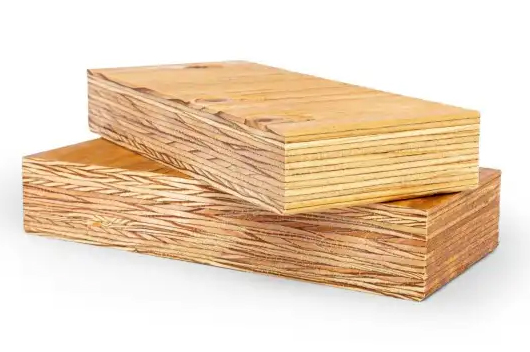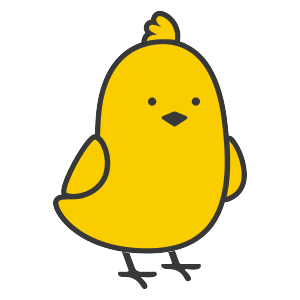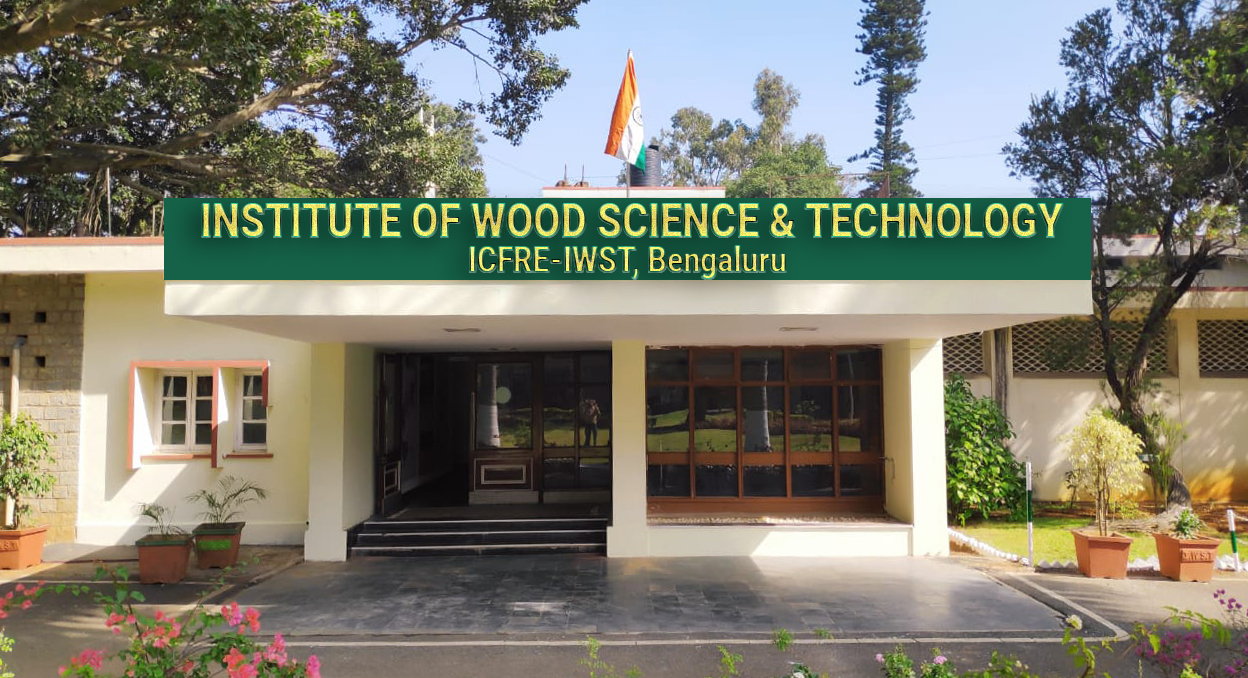Wood Properties
Wood Properties and Processing (WPU) Division (Erstwhile Timber Utilization Branch, Wood Properties and Uses Division) was created in the Institute when ICFRE was setup in 1988. The vision of the division is to achieve excellence in research, development and transfer of technology in wood properties for better and appropriate end uses for conservation of natural resources. The division is working on creation of database on anatomical, physical and mechanical properties of lesser known and plantation grown timbers for their improved utilisation and value addition, classification and grading of timber for different end uses, finding uses for lops and tops, wood properties as a tool for tree improvement, wood waste for value addition, development of testing methods for wood and wood products and disseminating the research findings on wood properties. Thus the division is involved in development and transfer of technology in wood properties for better and appropriate end uses for conservation of natural resources.
Supply of raw material from natural forest for wood-based industries is restricted due to depletion of forest cover. Extensive plantations of fast- growing species are being raised allover the country under forestry programme to meet the ever-increasing demand of timber industry. In order that plantation-grown species could be rationally utilised, a need has been felt to determine their strength properties and study their suitability for different end uses.
Study of strength properties of plantation grown timber species, such as Acacia nilotica (babul), P. falcataria, Cocos nucifera (coconut), Dalbergia sissoo (sissoo) and Hevea brasiliensis (rubber-wood), E. camaldulensis, Eucalyptus tereticornisjE.hybrid (eucalypts), Grevillea robusta (silver oak), Melia composita (malabar neem), Tectona grandis (teak), Cupressus goveniana, Cupressus lucitonica (cypress), Acacia mangium, Acacia crasicarpa, Pterocarpus dalbergiodes (andaman padauk), Simarouba glauca and Tecomella undulata (rohida) of different age groups were under taken and reccomended for various industrial and engineering uses.

The short rotation plantation wood is emerging as a major raw material resource due to ban on felling of trees in the forests. Eucalyptus species being fast grown is one of the most extensively cultivated species in India under major afforestation programmes. The wood obtained from short rotation plantation is different. Its utilization is therefore beset with number of problems. The various end-uses of Eucalyptus species prompted studies in its strength properties and variability in relation to location, age, height and girth. It is important to study the quality of wood by studying the physical (specific gravity and shrinkage behavior) and also the structural changes which in turn influence the properties. These studies will have practical utility in plantation forestry for determining the end uses apart from poles which are being used.
The importance of the present project lies in the facts that microfibril angle and spiral grain drastically influence physical and strength properties of timber. These studies carried out with respect to different age groups of CPTs in radial direction. Attempts are made to find out the relations between the strength properties (sp.gr.) with that of microfibril angle, spiral grain angle and their inter-relationships. This helps in predicting the behavior of timber in different usage and processing and thus provide better understanding of the nature of the material as well as its rational and appropriate utilization.
Radial variation of specific gravity was carried out on 5 CPTs each of Eucalyptus tereticornis and E.camaldulensis were taken for the determination of specific gravity, spiral grain angle, shrinkage properties and microfibril angle. The specific gravity within CPTs is found higher towards the pith side and decreases towards periphery. For the measurement of microfibril angle using Image Analysis System, the pit aperture orientation methodology was found better technique in the hardwoods like Eucalyptus. The microfibril angle was found to vary between 20 to 30 ° in the radial direction having maximum value towards pith side. Some of the CPTs having higher microfibril angle show higher shrinkage particularly in longitudinal direction. For the measurement of spiral angle, an instrument called Scribe Tester was got fabricated. This was used for measuring the spiral angle on the planks of these species and found to vary below 5 ° in both CPTs. The results showed that CPTs like APKKG4, APKMDM6, APKZSI and APNEKA2 have better quality i.e.less of spiralioty and microfibril angle than others. When vegetative methods are followed, they are expected to produce the same characters.

DC electrical properties of four plantation grown timber species namely Eucalyptus tereticornis, Grevillea robusta, Hevea brasiliensis and Tectona grandis have been measured with respect to moisture content and specific gravity. The effect of grain direction on resistivity and dielectric constant ( at microwave frequency) was also investigated. In case of DC electrical properties, resistivity was found to decrease with moisture content nonlinearly and have a positive correlation with specific gravity. In case of AC electrical properties, dependence of dielectric constant on moisture content has shown a non-linear behaviour for both the grain directions. The variation of dielectric constant parallel to grain has shown a linear behaviour with sp.gr. while it was found to vary non linearly in case of perpendicular to grain direction.
The dielectric constant in two mutually perpendicular directions (i.e. along and across the grain) of four plantation grown timber species namely Eucalyptus teritecornis,Grevillea robusta , Hevea brasiliensis and Tectona grandis have been measured with varying moisture content at microwave frequency. The dielectric constant has shown a non-linear behaviour with moisture content. The variation of dielectric constant with specific gravity (in the range of 0.55 to 0.72) was found linear in case of parallel to grain directions whereas it showed a non-linear relation in case of perpendicular to grain. The ionization energy have been computed for all the four timber species following Hearle hypothesis and found to vary linearly with moisture content.

The main objectives of studying the acoustical properties of plantation timbers are to control intensity of acoustics in the buildings/halls, to study the acoustical behaviour of plantation timbers for their suitability in manufacturing the musical instruments. Based on these studies the timbers will be screened out for their use in musical instruments and wall paneling (as sound insulation) based on their acoustical properties. The division will also develop testing facilities for performance tests of musical instruments.

Vibration testing technique was used to determine dynamic modulus of elasticity of Acacia auriculaeformis, A. mangium, Bombax ceiba, Broussonetia papyrifera, Cocos nucifera, Dalbergia sissoo, Dendrocalamus strictus, Eucalyptus citriodora, E. tereticornis, Grevillea robusta, Hevea brasiliensis, Pinus spp, Santalum album, Shorea robusta, Simarouba glauca, Swietenia mahagoni and Tectona grandis in air-dry condition using microprocessor based elasto-sonic instrument. Static modulus of elasticity, modulus of rupture and fibre stress at limit of proportionality were evaluated by conventional test method. The results show statistically significant relationship of dynamic modulus of elasticity with static modulus of elasticity, modulus of rupture and fibre stress at limit of proportionality. Variation in dynamic modulus of elasticity was explained from the point of view of anatomical structure.
For the first time radial variation studies in anatomical features and relating them to physical properties was carried out to assess the wood quality in Acacia auriculaeformis hybrids and Acacia mangium hybrid was carried out. Present study helped in generating data as well as utilization of such hybrids for various end uses and for selecting trees in tree breeding programme.For better utilization of wood, it is important to know the effect of age on wood properties, including size and distribution of cell types. Information on anatomical properties is important for further clonal selection, rotation and for better utilization of the timber.
Both the hybrids are as good as Acacia auriculaeformis and Acacia mangium for usage in Paper and pulp. Acacia mangium hybrid is comparatively better for usage in pulp to Acacia auriculaeformis hybrid. Acacia auriculaeformis hybrid is better for solid wood products where as Acacia mangium hybrids may pose problem during processing as it shows slight wooliness because of tension wood. Radial variation studies indicate non-significant variation in almost all the parameters except tissue proportion in Acacia mangium hybrid and fibre diameter, fibre lumen diameter and vessel diameter in Acacia auriculaeformis hybrid. Hence growth wise both the hybrids are sufficiently grown for end use like solid wood products and paper and pulp. Harvesting of trees can be extended for few more years if end users wants timber with bigger girth.
>
LVL and PSL manufactured elsewhere, made of rubber wood (Hevea brasiliensis) using exterior type adhesive have been evaluated for strength properties in air-dry conditions. These products were manufactured and supplied to this laboratory by a private industry located in Karnataka, India. LVL has shown improved strength properties as compared to solid rubberwood and teak. Comparision of strength values of PSL have been made with those of LVL, solid rubber wood and standard teak. The results show that PSL has slightly lower values of strength properties compared to teak, solid rubber wood and quite inferior to that of LVL. On the basis of the data obtained, LVL and PSL made out of rubber wood can be utilized as a structural material for different purposes like door and window frames, rigs and trusses.

The fracture toughness of wood in teak, rubber wood and mango were computed in the LR and LT crack plane configurations. Teak wood has shown highest fracture toughness followed by rubber wood and mango wood. The crack plane orientation has large influence on the fracture properties. It was found that all the three species exhibit more fracture toughness in LT plane than in LR plane. The fracture toughness values of plywood and particleboard wood composites in flat and edge crack plane configuration were determined. The plywood samples showed higher fracture toughness values as compared with particleboards in both the crack plane orientations. Plywood exhibited higher values of toughness when loaded in the edge crack plane as compared with the flat crack configuration. Particleboard also exhibited the similar pattern being tough while loaded in the edge than in the flat. The greatest acoustic activity was observed near the end of the proportional limit and just before the sample failure. Acoustic activity (cumulative signal intensity) was found to be increasing with the application of increasing loads and also with time till the failure of the sample. For given the same amount of load, the notched samples have shown higher amount of acoustic signals and early onset of the emission of acoustic signals as compared to the wood samples having no notch. The compressive strength was found highest in the longitudinal direction followed by radial and tangential directions. In all the three directions, the compressive strength was found to increase with loading rate up to 10 mm per minute and then decreased. The rate of decrease in the longitudinal compressive strength was more as compared to other two compressive strengths. At higher loading rates (100 mm per min.), the difference between the radial and tangential compressive strengths were shown to be minimized and these were found merging in each other. This shows that at higher loading speed like sudden impacts, compressive strength of wood in radial and tangential directions becomes almost equal. The compression fracture of samples in longitudinal direction was observed to have a characteristic appearance. The fracture band was found to run perpendicular to the grain on the radial face and obliquely on the tangential face having an angle between 60 o to 70 o along the grain direction. The fracture band was about 1-2 mm wide and fibres have been observed as buckled but have remained continuous. Microscopic observations of the longitudinally compressed specimens revealed a characteristic fracture band of buckled fibres making S like shape. In some of the samples, branching macroscopic failure lines were also observed. Tangential view of the specimen tested in compression parallel to grain showed that extreme buckling at microscopic level resulted from separation of cells above and below buckling zone.

Alternate timbers for packing cases The most efficient alternate for saving of wood is wire bound veneer box as the adoption of this box will reduce the requirement of wood for different capacity of loads. These boxes may be suitable for horticulture produce upto 20 kg load which ultimately save the timber and thus help in conserving the forest resources. These boxes can be stored or transported in flat condition and quickly assembled at site for which no technical skill required. Wire bound veneer boxes are best suitable for every type of transportation. These boxes can be used several times.
Advantage of wire bound veneer box
60% saving of wood when 3 mm veneer used. 50% saving of wood when 4 mm veneer is used.
Can be stored or transported in flat condition and readily assembled for use at site.
Cost-wise wire bound boxes are cheaper than conventional boxes.
These boxes are best suitable for every type of transportation.
Logs of smaller girth can be used for making these boxes. Wire-bound veneer boxes can be used several times.

Use of coconut (Cocos nucifera) wood in bent form has been explored using ammonia plasticization technique. The results indicate that coconut wood can be successfully bent to different shapes with minimum radii of 40 and 50 mm for strips of 15 mm and 50 mm thickness after giving vapour phase ammonia treatment at a constant pressure of 5 kg/cm2 for 3 hours. A few decorative prototype products were made using the bent coconut strips, which indicates that coconut wood can suitably be used in bent form. The studies were found to be useful in giving value addition to coconut wood because the bending technique would economize use of wood and provide aesthetics.

Rosewood, Red sanders, Sandalwood, Walnut are some of the timbers extensively used in handicrafts by artisans for making various utility items. However, these timbers are becoming scarce due to over exploitation. Alternate timbers from plantations like Acacia auriculaeformis, Eucalyptus camaldulensis, E.tereticornis, Leucaen leucocephala, Maesopsis eminii, Swietenia mahagoni and natural forests like Adina cordifolia, Ailanthus excel sa , Albizia lebbek, Alstonia scholaris, Anogeissus pendula, Artocarpus he terophyl Ius , Artocarpus hirsutus, Azadirachta indica, Bauhinia malabarica, Boehmeria rugulosa, Buxus wallichiana syn. B. sempervirens, Chloroxylon swietenia, Cinnamomum zeylanicum, Cordia macleodii, Diospyrous ebonum, Dysoxylum malabaricum, Euonymus crenulatus, Gardenia latifolia, Gmelina arborea, Gyro carpus americanus, Hardwickia pinnata syn. Kingiodendron pinnatum, Holoptelea integrifolia, Holarrhena antidysenterica, Hymenodictyon excelsum, Juglans regia, Lagerstroemia nicrocarpa syn.L.thomosonii, Linociera malabarica, Melia azedarach, Mi tragyna parvifolia, Plumeria rubra, Pterocarpus marsupium, Sterculia urens, Toona ciliata, Trewia nudiflora, Wrightia tinctoria, Zanthoxylum ovalifolium and Zan thoxyl um rhetsa which have potential for making various artifacts been suggested. As the end product producted is dependent upon anatomical structure, properties and colour of the wood, these details alongwith tree form and distribution are given for 43 species.



